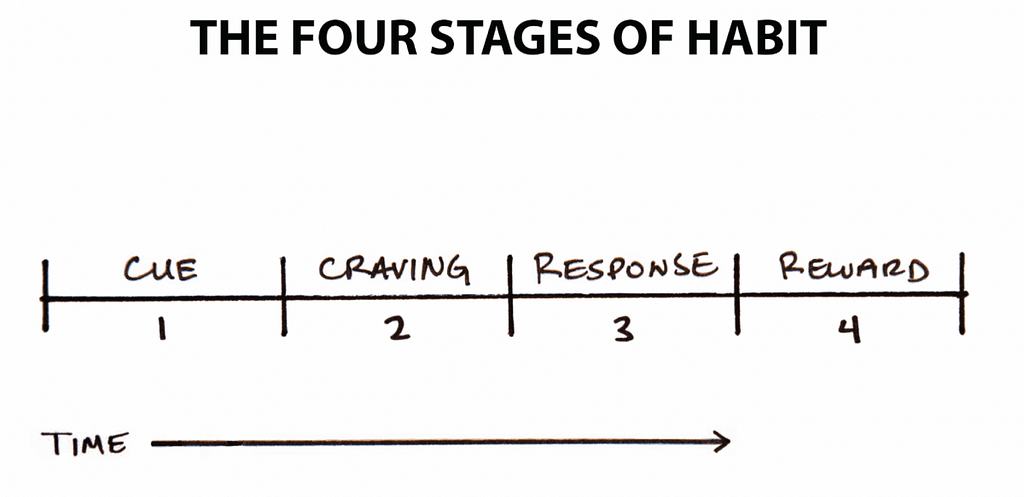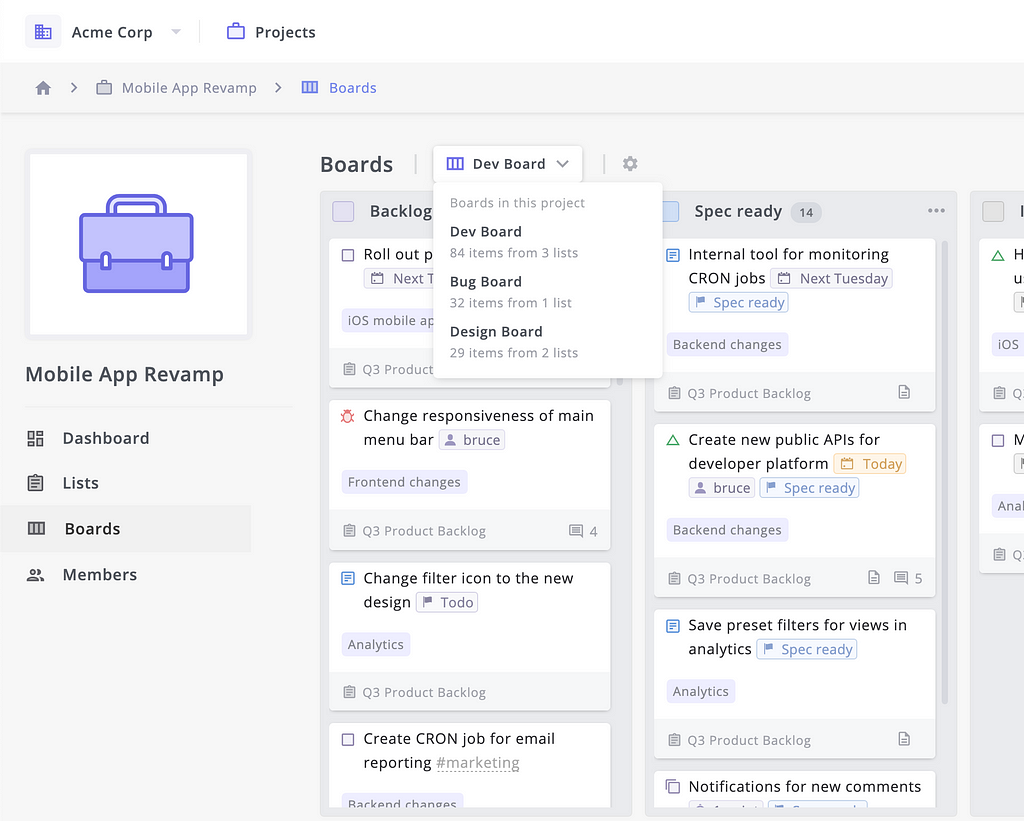Latest news about Bitcoin and all cryptocurrencies. Your daily crypto news habit.

I know, you’ve tried “tweaking” and making changes in your team.
You set up processes, hired team leaders, set clear responsibilities, and shared SMART goals.
And yet, there’s still something that seems to be missing.
In the early days of building your startup, you most likely didn’t feel the need to improve how your team collaborated. But every time your team grows, you start noticing members of your team working in silos and have different versions of the truth.
And you can’t blame them.
In the hope of getting team collaboration right, teams often shift from natural conversation to more organized meetings. And the problem starts when teams find it hard to keep a healthy balance between allowing time for deep work and the need to foster healthy collaboration habits.
So how do you set up a collaborative workplace for your team?
Are the benefits of team collaboration just about efficiency and making more money?
Sure, working together as a team and collaborating on projects help you bring talented people together, ship features faster, and make more revenue.
But when you dig a little deeper, you find the benefits you reap from a collaborative team is more than just speed or money.
Many of today’s most important challenges are so complex and multifaceted that they can only be tackled by teams of experts from specific domains. But it turns out, a team of experts alone isn’t enough.
According to the Project Management Institute (PMI), ineffective communication can be attributed to 56% of failed projects. And a 2-year long study on 180 teams by Google reports the same.
Some people are of the opinion that the perfect ingredient for a well organized team collaboration is sharing information. You set up a meeting, share and discuss points, and voila, instant collaboration.
Others think it’s about having a close eye on what’s happening. Having just the right team size and having unique team structures.
But it turns out, the perfect ingredient to add to your mix and nail your team collaboration isn’t easily quantifiable.
Researchers in Google found less successful teams had managers speaking for 80% of the time, while more collaborative teams had everyone speak equally, either through a daily standup or weekly check-ins.
Who is on a team matters less than how the team members interact and view their contributions.
Information in companies often sit in silos across different members of the team. Simply communicating with members who have previous experience, a unique skill set, or even someone who reads a lot can help improve the project’s quality, transfer knowledge to others, and help ship quicker.
The results of Google’s research showed that a well organized team that collaborated well had individuals who felt psychologically safe. This reduced the possibility of leaving the company, increased the likelihood of using diverse ideas, helped bring in more revenue, and be twice as effective as others in getting the job done.
And it makes sense, right? When you are spending the majority of your time at work, wouldn’t you rather spend it a place where you can communicate openly, gain new knowledge, share your ideas, and feel appreciated?
The benefits of team collaboration were tied to shipping faster and making money back when everyone worked out of cubicles.
Today, the benefits of team collaboration also include:
→ Make people more dependable
→ Retain people in your company and not lose them to another
→ Work will mean more to people, which will make them want to deliver with higher quality
→ Share knowledge across the company
Challenges in getting team collaboration right
As with everything, team collaboration also has its challenges when it comes down to implementing.
Even though team collaboration can unlock several opportunities and benefits, you might come across these 4 key challenges while trying to make changes and get your team to work together:
1. Defensive about new workflow
Every team has their own way of working.
Every time you ask your team to change the way they work, their subconscious mind wonders how the new way of working can fit into their workflow. Not the other way around.
Habits are your brain’s version of autopilot. And once your team makes a habit of working a certain way, it’s hard to change them as they are strongly linked to being productive.
 All habits proceed through four stages in the same order: cue, craving, response, and reward. Image credits: James Clear
All habits proceed through four stages in the same order: cue, craving, response, and reward. Image credits: James Clear
Susan Courtney, chair of the Department of Psychological and Brain Sciences in Johns Hopkins University Krieger School says, “Habits allow us to do things quickly and efficiently, to get the things we want and to avoid the things we don’t want, without using a lot of resources for making decisions.”
“The chains of habit are too weak to be felt until they are too strong to be broken.”
In a world where the pace of work has dramatically increased and we are all expected to do more in less time, you can’t help but empathize on why teams can be reluctant to make tweaks to their way of working.
2. Lack of Clarity
In an effort to keep everyone aligned with goals and set clear expectations, teams end up resorting to never-ending meetings and discussions. And when teams realize how difficult it is to give everyone the clarity on the larger goals and what their responsibilities are, team collaboration takes a hit.
If only people had telepathic powers!
In her article on Harvard Business Review, Professor Lynda Gratton mentions that the common assumption is carefully laying out the approach to achieve the goal is more essential to improve team collaboration. But it is, in fact, the opposite. She adds, “Collaboration improves when the roles of individual team members are clearly defined and well understood”.
To help us understand what she meant, she studied three different teams in BBC who oversaw a two-month musical celebration called Proms, the 2006 World Cup, and the news channel itself.
With 33 people working on the Proms, 66 on the World Cup, and 72 on the news channel, you can imagine how diverse the teams were in terms of the skillset they possessed. There would be a lot of confusion among the team members and chaos and delays.
Even though the tasks BBC team members tackled were largely vague and had a lot of uncertainty, team members of all three teams had very little overlap in responsibilities.
Having a clear understanding of what is expected of them, the process for fulfilling these expectations, and knowing the consequences of their performance all helped the team members to deliver on time with the kind of quality that only BBC is known for.
3 Reasons Why Developers Do Not Update Progress On PM Tools
3. Too much information
Just a decade ago, everyone wanted to kill email.
While most team members wished they didn’t have to go through another email, you had managers sending one email after another and filling up inboxes with “FWD: Re: Re: Important Update!”.
While it is important to keep every member of the team aligned and in sync, teams often forget that people need longer periods of uninterrupted time to do their best work.
Today, even with tools like Slack and many project management tools that originally set out to keep everyone updated by giving the right context and removing all the noise, people still get far too many messages than ever before.
4. Psychological Safety
Some people are great at coming up with solutions and be at their creative best when put under tough situations. But that only works well if they are working by themselves.
Laura Delizonna, an instructor at Stanford University says for teams to be successful in the twenty-first century, they need to take the “broaden-and-build mode of positive emotion”. In her article, she talks about how positive emotions allow us to foster cooperative relationships and solve complex problems. Positive emotions like trust, confidence, and inspiration broaden the mind and help us build relationships that promote trust.
On the other hand, when we are pushed to adopt a new way of working it can make us wonder if we’ll be punished for a mistake we did and switch our brains to a fight-or-flight mode. And this “act first, think later” structure shuts down analytical reasoning, and inhibit our ability to bring the best version of ourselves to work.
So, how do you improve collaboration within your team?
The road to team collaboration hell is paved by our own good intentions of getting it right. Everyone wants to nail it, but the real question is how do we do it for our team?
Conventional wisdom and multiple researchers quoted above agree that to improve and get your team to work more collaboratively, you should:
1. Be a Leader
“How clichéd”, I hear you say. But being a leader isn’t about just delegating work or communicating often.
It’s about getting people in your team to feel trusted, appreciated, and comfortable enough to bring up new solutions to both their peers and you, the manager. But that doesn’t have to mean you should be trying to build a rapport or start have weekly team-building activities.
Helping your team members feel trusted isn’t about likability. It’s about making your intentions clear and being honest about it.
“Trust is people’s perception of who you are, and their expectation of what you can do.”
~ Claire Lew, CEO of Know Your Team
Whether you are communicating what you want to achieve or what you expect from your team members, making your intentions clear helps them understand what their responsibilities are.
Take away: Build trust within your team. Share information and share them with context.
2. Share Goals
I know you communicate what you want to achieve with your current project. But it’s almost impossible to stay focussed and keep the goal in mind as plenty of things shift and change. While you might think you’ve been repeating the same thing over and over, your team members feel otherwise.
When asked if there were things that they didn’t know about the company that they feel that should know, 55% out of 3,197 people answered “Yes”.
Take away: Constantly communicate with your team on what you are trying to achieve and what the bigger goals are.
3. Define roles and responsibilities
Motivate and help team members understand how their contribution to the project helps the company achieve its bigger goal.
Helping team members understand their roles and responsibility brings clarity and helps them do what they do best. For example, a marketer who knows their customer’s goals is more likely to empathize and build better campaigns. An engineer who knows how their feature will be used by the users can make better decisions and optimize feature performance for a better user experience.
And when your team members understand the intricacies of what they need to be focusing on and what is expected of them, they are more likely to give their best.
“If you’re too busy doing the actual work, as a manager, that’s a huge mistake.”
Take away: Give your team members a clarity on what their role is and what is expected of them.
4. Setup a workflow
Establish a workflow and an environment to help members work together without stepping on each others’ toes.
Most tools, blog posts, and articles on the internet oversimplify this into assigning specific tasks, adding deadlines, and having conversations with teammates. And when you’re working on solving some of the hardest problems of this generation, simple collaboration features aren’t going to cut it.
Sure, they make collaborating with your team slightly less of a pain compared to doing it over meetings and email threads.
But teams often forget that at the core of every successful collaborative team is a group of people who are different with unique ways of working. So, when it comes down to getting everyone to work together on a project, teams find it hard to stick to new workflows and collaborate.
Now, don’t get me wrong. I’m not suggesting you get rid of your existing workflows and processes. They are great if it allows everyone to work just the way it works for them and keep everyone updated of the progress.
If you can set up a workflow that fits everyone, it does wonders to get your team to work together:
- Keeps everyone on the same page
- Avoids information overload
- Gives everyone the context they need to work
- Prevents miscommunication, and
- Allows everyone to focus on what they do best
Besides, aren’t these some of the same benefits you get when your team collaboration is on point?
Let your team’s workflow dictate your process.
Not the other way around.
In the hopes of allowing everyone’s workflow to fit into the process, teams often struggle to find a workflow that isn’t too simple or complicated. Unfortunately, when you get your workflow wrong, it can lead to getting vague and outdated project updates that can ultimately delay your project’s release.
The common approach to finding a workflow that fits everyone in your team is to simply go by trial and error method and learn as you go. But since it isn’t all too efficient and complicates things, why not empower your teammates to work just the way they want?
 Fit every team’s workflow in your project and move tasks across boards in Zepel
Fit every team’s workflow in your project and move tasks across boards in Zepel
If you’re using Zepel to manage and keep track of your projects, create a Board inside your project for every workflow your team needs. That way, if you’re working on a new feature, your designer, QA person, and developer wouldn’t have to cram all their work into one workflow.
Everyone can work with just their world view of the project, without losing context of the project’s goal, and stay updated with everything that’s happening in your project.
And the best part? You, as a product manager, get to see how the entire feature is shaping up in one place.
Take away: Set up a process that fits all of your team’s workflow.
Conclusion
Having a collaborative team has plenty of advantages both in the short and long term for your company.
But getting your team to collaborate and communicate on progress without stepping on each others’ toes is hard.
No matter what project management tool or processes you use, highly collaborative teams have:
1. A leader who encourages everyone to share ideas
2. Everyone aware of the company’s bigger goal
3. Team members who have clarity on their roles and responsibilities, and
4. A tool that fits everyone’s workflow in the team
At the end of the day, you are dealing with people who come with different perspectives and different ways of working. Getting them to work together is about getting all the small, finer details right.
Originally published at https://blog.zepel.io on April 22, 2019.
What it Takes to Get Your Team to Collaborate in 2019 was originally published in Hacker Noon on Medium, where people are continuing the conversation by highlighting and responding to this story.
Disclaimer
The views and opinions expressed in this article are solely those of the authors and do not reflect the views of Bitcoin Insider. Every investment and trading move involves risk - this is especially true for cryptocurrencies given their volatility. We strongly advise our readers to conduct their own research when making a decision.
